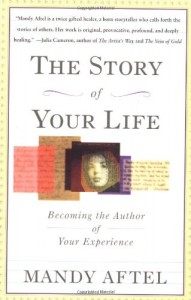A Reframe Story About Compassion
Reframe Stories
Reframe Stories are a version of Perspective Change stories. By sharing an example of how a situation you saw in one way could be looked at in a totally different way–i.e. the story reframes the problem or issue–you stimulate the other person to do the same.
Before The Story…Think About This…
Before I tell you this story, I’d like to ask you to think of someone you have strong judgment towards…especially someone who you perceive as mean or antagonistic. Notice what you tell yourself about them and the judgments you have.
“What a cold, hard person!”
OK…now…here’s the story….
While cross country skiing on a snowmobile trail, I was passed by two snowmobiles roaring by. A little distance farther, I came upon the same two men. One sat on his snowmobiles, while the other stood. The one standing was facing in my direction as he talked. The one on the snowmobile facing away from me. As I got closer, I looked at the one facing me, attempting to make eye contact and say “Hi”.
He acted like I wasn’t there. Besides his lack of friendliness—not an uncommon phenomenon in New England—I was struck by the cold, hard set to his face. It was almost menacing.
A Whole New Way of Looking at Him
The following summer, I was walking in the grocery store with my friend Dr. Bonnie Vestal, a medical counselor from Boise, and spotted this man.
“Hey, you see that guy there,” I whispered, “What’s your take on him?” I asked.
She’s one of those people whose impressions and perspectives I frequently seek out, both because of her wisdom and her ability to “see into” others and pick up on their essence, despite the persona they project to the world.
“He looks like someone who was hit in the face as a child,” she said, in a soft, compassionate voice.
Suddenly my judgment toward this man and primal discomfort shifted to one of compassion. Instead of this cold, hard, mean-looking guy, I could see a hurt child who had spent his life trying to protect himself from being hurt.
That’s the power of a reframe.
Back to YOUR person…
As you think of them, see if you can see who they were as a child or, if it’s easier, see if you can imagine what their private life is like—both their internal world and their life outside of their public interactions of work, church, or wherever you encounter them.
How does this perspective help you see them in a new light?
_________
Storytelling Note
The “Before the story, think about this.” section of the story is a direct way to stimulate the reader or listener of your story to think about their own example of the experience you are about to describe. It’s what I call “Linking Phrases” because it helps them link past and future experiences with the particular perspective or emotion that your story is designed to evoke. This increases the odds that your story will help them in the situations (or memories) that they most need to be helped.
Also, because you ask them to think about their own example of the challenging situation, it increases their interest level in your story. As they recall their own version of the problem or challenge, it activates their desire to learn how to deal with it more effectively.
You might notice in my videos, or if you’ve seen me live, that I will sometimes stop in the middle of a story and say something like “Maybe you can think of your own experience where you…” Those are examples of using Linking Phrases to increase the person’s connection–both consciously and unconsciously–with the story. I believe it’s especially helpful for the more concrete people in the audience who might be thinking “Why’s he telling me this story about himself?”
By asking them to think of their own exmaples, it helps them focus on what they care about: their own problems, challenges, and life.



